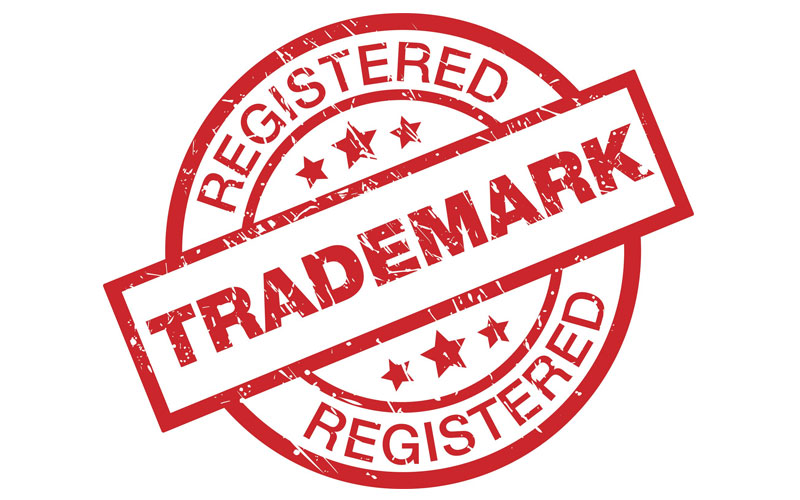Trademark

Protect Your Brand. Register Your Trademark Today.
Overview of Trademark Registration
A trademark is a unique identity that distinguishes your product or service from others in the market. It can be a word, logo, phrase, design, or combination. Trademark Registration provides legal protection, builds trust with customers, and gives you exclusive rights to use the mark.
Registering your trademark is a critical step in building a brand that stands out and is protected under the law.
Benefits of Trademark Registration
1. Exclusive Rights – Only you can use the mark.
2. Brand Recognition – Helps establish brand loyalty.
3. Legal Protection – Prevents misuse or copying by others.
4. Intangible Asset – Can add financial value to your business.
5. Global Expansion – Easier trademark recognition internationally.
6. Deterrent to Competitors – Public record discourages infringement.
Types of Trademarks
• Word Marks – Brand names or words
• Device Marks – Logos or symbols
• Service Marks – For service-based businesses
• Sound Marks – Audio tags or jingles
• Collective Marks – Used by members of an association
• Certification Marks – Guarantee a product meets a standard
Trademark Classes
There are 45 classes under the Nice Classification:
• Classes 1–34: Goods
• Classes 35–45: Services
Selecting the correct class is essential to protect your specific products or services.
Difference Between™ and ®
| Symbol | Meaning | Usage |
|---|---|---|
| ™ | Trademark (Unregistered) | Indicates you're claiming a mark but haven’t registered it yet |
| ® | Registered Trademark | You have officially registered the mark and have legal rights |
Documents Required
• Business Registration Proof (e.g., LLP Agreement, Partnership Deed, Company Incorporation)
• Identity Proof of Trademark Owner (Aadhar, PAN, Passport)
• Address Proof
• Logo (if applicable, in JPEG format)
• Signed Power of Attorney (Form TM-48 or equivalent)
• MSME/Startup certificate (for government fee concession, if applicable)
Steps for Trademark Registration
1. Trademark Search – Check availability of desired mark.
2. Application Preparation – Drafting and submitting the application.
3. Filing with Trademark Office – Submit under correct class.
4. Examination – Review by government authority.
5. Publication in Journal – Open to third-party objection.
6. Opposition Period – (usually 3-4 months)
7. Registration Certificate – Issued if no objections or resolved.
Time Limit for Registration
• Application Filing: Immediate
• Govt Review: 1–2 months
• Objection Handling (if any): Additional 3–6 months
• Total Time: 6–18 months (approx.)
Frequently Asked Questions (FAQs) on Import Export Code (IEC)
1. What is a trademark?
A trademark is a unique sign, logo, phrase, symbol, or combination that identifies and distinguishes the goods or services of one business from another.
2. Why should I register a trademark?
Registration gives you exclusive rights, legal protection, brand recognition, and helps prevent others from using your brand name or logo.
3. Can individuals apply for a trademark?
Yes, individuals, startups, partnerships, and companies can all apply for trademark registration.
4. What is the difference between ™ and ® symbols?
™ can be used for unregistered trademarks. ® is reserved for trademarks that have been officially registered with the Trademark Registry.
5. How long is a trademark valid in India?
A registered trademark is valid for 10 years and can be renewed indefinitely every 10 years.
6. What if someone already has a similar trademark?
If a similar mark exists, your application may face objections or be rejected. A proper trademark search before filing helps avoid this.
7. What is a trademark class?
Trademarks are classified into 45 classes, each representing different goods or services. Choosing the right class is essential for valid protection.
8. Can I file for multiple classes?
Yes, you can apply in multiple classes if your business covers multiple goods or services.
9. How long does the registration process take?
Typically, 6 to 18 months, depending on whether there are objections or oppositions.
10. What documents are required for trademark registration?
Basic documents include identity proof, address proof, business proof, a copy of the logo, and a signed power of attorney.
11. Can I register a trademark online?
Yes, the process can be done online via the IP India portal or with help from professional service providers.
12. What happens if someone infringes my trademark?
You can take legal action to stop their use, claim damages, or seek injunctions through a court of law.
13. What is a trademark objection or opposition?
An objection is raised by the Trademark Examiner. Opposition is filed by a third party after the mark is published in the journal.
14. Can I register a trademark internationally?
Not automatically, but you can apply via the Madrid Protocol for international protection in multiple countries.
15. What is Form TM-A and TM-48?
• TM-A is the application form for registration. • TM-48 is the power of attorney authorizing a trademark agent or attorney to act on your behalf.
